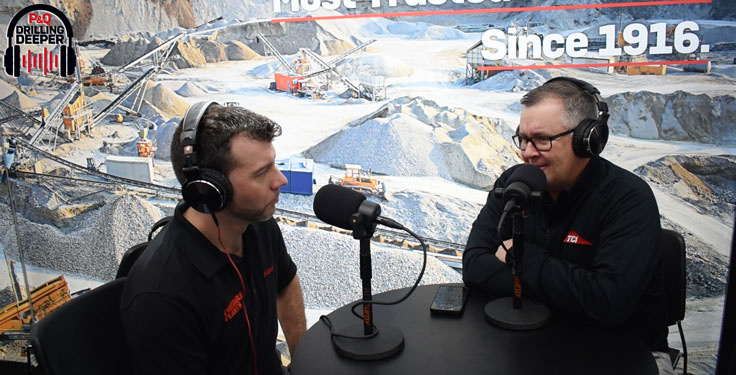Automated fuel management

New advanced fuel-management services have been designed for ease of use and
understanding. Photo: ISTOCKPHOTO.com/ImageegamI
New advanced fuel-management services have been designed for ease of use and understanding, with an array of benefits to the end user.
Unstable oil prices have always placed a level of uncertainty behind the fuel management process. Unpredictable fuel prices create huge daily budget challenges. This is especially true for those operations where processes are not automated and the fuel data management is decentralized.
For years, some operators have been “sticking” their fuel tanks in order to obtain an inventory level every day at 9 a.m. Sure, it might not be the most accurate way to measure product levels, but it has generally let operators know how much fuel – diesel, gasoline, ethanol – they have left in the tank, and when it’s necessary to place the next order.
At non-retail fueling sites, operations managers know and trust their drivers and are confident that they’ll accurately write down on a log sheet the amount of fuel pumped into their company’s vehicles. The operations manager is also certain that when the gallon total is passed on to the accounting department, it will be manually entered correctly into the company’s accounting system.
But we’re all human. With our extremely busy schedules, forgetting to write down a fueling transaction or transposing a number due to workday distractions can – and does – happen.
Operations managers may think their way is working, but in reality, there is enough inefficiency in this approach that these companies may be losing thousands of dollars a year in fuel, equipment maintenance, liability and compliance costs.
In addition, operators may be faced with financial losses owing to extensive dispenser downtime or, in a worst-case scenario, an environmental disaster. An answer to these concerns can be found in technology, which is driving today’s automated fuel-management services.
Inventory and technology
The No. 1 priority of any jobsite operator should be to know, at any moment, just how much product is in each of the site’s storage tanks. Sticking tanks may still be popular with many companies, but new technology can measure and record product levels to one-tenth of an inch.
It goes without saying that fuel is the lifeblood of any business with fleets of vehicles, so why live with inaccurate inventory levels when technology has been developed with accurate inventory measurement in mind?
While many companies with fuel-storage tank operations have a national footprint, the management overseeing those operations is typically regionalized, with the fuel-management segment of the business decentralized.
This can often lead to a lack of coordination and communication between the respective parties, resulting in additional, often unnecessary or redundant, reporting processes that can drain company resources, as well as open the company up to greater risks and liabilities.
The proper knowledge and experience in managing fueling operations are also becoming more and more important as strict compliance regulations are enforced. Federal, state and local authorities are becoming more vigilant, and their regulations are becoming increasingly complex in regard to release detection, reporting, spill prevention, corrosion protection, air quality and the presence of hazardous substances at a fueling site.
Too many companies, however, do not focus enough on complying with these regulations. Compliance management often falls to someone who is not specifically trained in that area. These days, that inexperience can be costly.
Service costs can also be a drain on a facility that does not have the most advanced fuel-management program in place. Many sites rely on a local service provider when any maintenance or alarm issues arise. Being unable to proactively identify recurring maintenance issues can result in increased costs brought on by needless service calls. This tracking task is often assigned to an employee who has no expertise in this area.
New advanced fuel-management services have been designed for ease of use and understanding, with an array of benefits to the end user. These systems can easily provide an end-to-end fuel-management solution, delivering maximized operational efficiencies and site profitability.
Here are five areas where an enhanced fuel-management system can pay additional dividends.
1. Automated fuel tracking. Automated fuel tracking allows real-time access to inventory levels and fueling habits at any time of the day or night for all of a company’s fuel sites. Why would site operators do nothing more than take a best guess at how much fuel might be in their tanks at any one time, especially when that fuel costs upwards of $3 per gallon?
Automated fuel tracking provides a more accurate account of all the fuel use at an operation, and exactly where that fuel is going. This will decrease opportunities for theft.
In addition, many sites store and dispense more than one type of fuel. A commercial site that serves a fleet of trucks will go through diesel at a rapid pace, but it may have a less-used gasoline pump for employee vehicles. Automated fuel tracking will enable the diesel and gasoline tanks to be monitored separately with their specific delivery requirements tracked independently.
2. Reduced maintenance costs. Maintenance issues cause headaches not only when a piece of equipment fails, but also when the maintenance issue needs to be documented. If this data is not accurately recorded, the site operator runs the risk of overpaying for a service call or repeating service calls.
3. Compliance management. Automated fuel-management systems have been designed to track and update compliance data and incidents 24/7. Compliance management at commercial or industrial sites can be a lower priority, but automated management of this process increases its importance in the system without increasing the amount of employee interactions.
4. Alarm management. Alarm management is traditionally a labor-intensive, manual job. Automated fuel management allows this difficult task to be outsourced to a company that can diagnose, solve and document alarm conditions immediately. These companies also have the capability, in many instances, to diagnose and solve alarm events remotely, which means the system can be reset offsite without the need for a service call.
5. Manage contractor database. Unless site operators have a longstanding relationship with a service professional, they enter the unknown when site repairs or maintenance are needed. Rather than turning solely to the phonebook, automated fuel-management systems allow a contractor database to be set up for the site, often by the company that’s providing the fuel-management service.
Takeaways
Fueling site operators who are truly interested in proactively managing their fueling operations will quickly realize the cost benefits of an automated fuel management system. By reducing manual processes, unnecessary service calls, potential compliance penalties and many hours of unnecessary or inadequate manual work, automated fuel management can result in significant resource and administrative savings.
Take note
Sites may be losing thousands of dollars a year in fuel, equipment maintenance, liability and compliance costs because of inefficient fuel-management methods.
Pete Cochefski is the director of Ryder Fuel Services, a provider of fuel management programs. www.ryder.com









